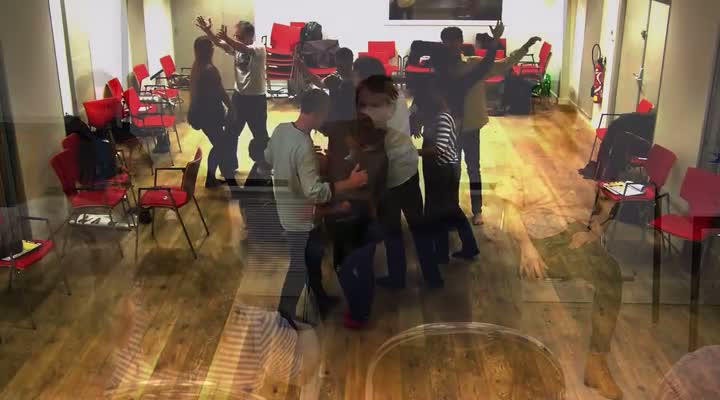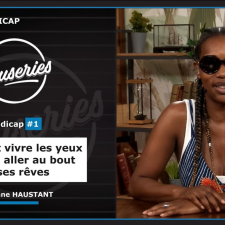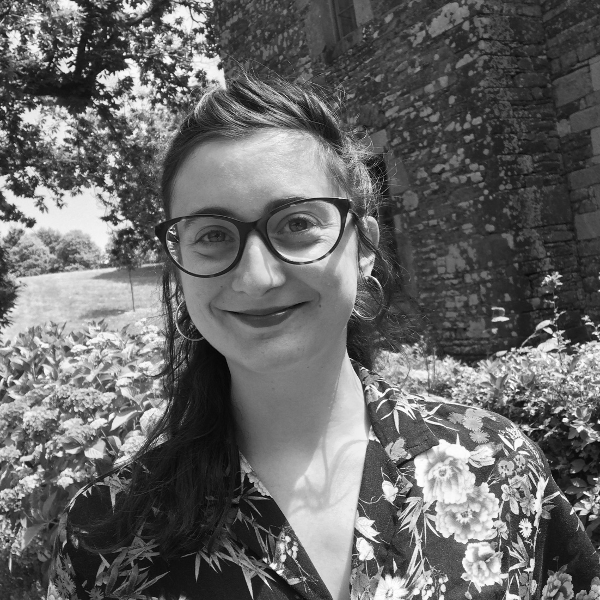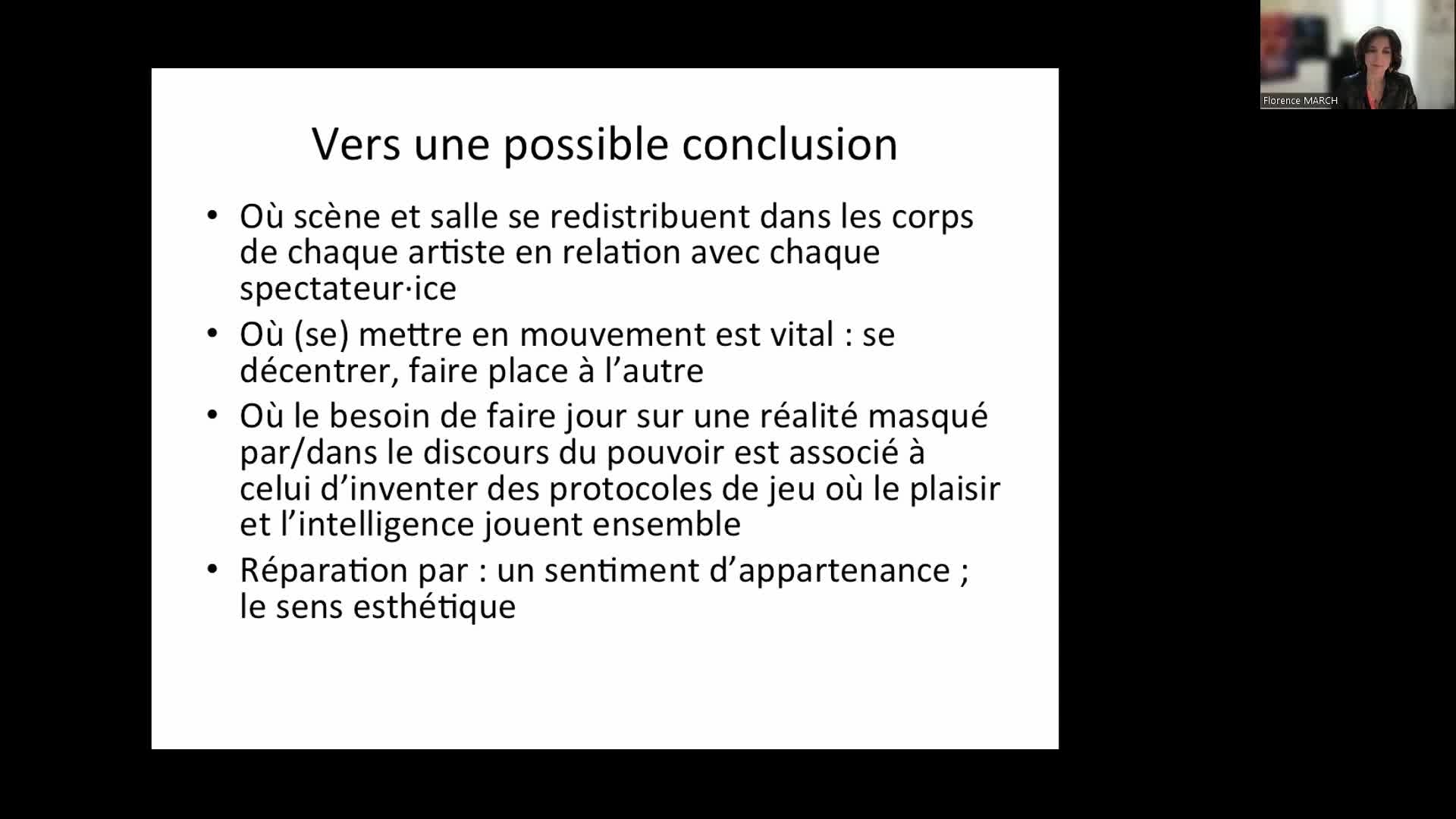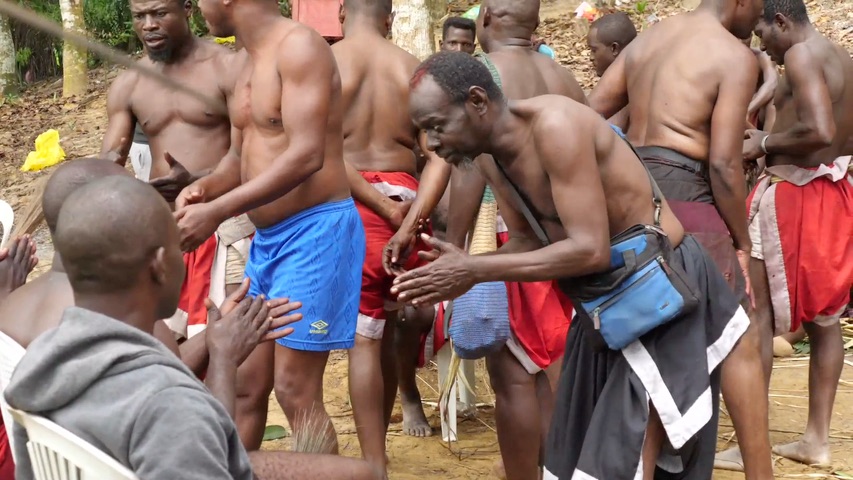Notice
Operationalizing Social Neuroscience through HumanHuman and HumanMachine Interactions
- document 1 document 2 document 3
- niveau 1 niveau 2 niveau 3
Descriptif
How are neural, behavioral and social scales coordinated in real time so as to make possible the emergenceof social cognition? Answering this question requires to study the dynamics of coordination in real humaninteractions. However, even at the simplest dyadic scale, methodological and theoretical challenges remain.Several theories have been proposedto infer the link between neurobiology and social psychology, but the dynamical components of humaninteraction are still poorly explored because of the difficulty to record simultaneously the brain activity fromseveral subjects. This is the goal of hyperscanning methodology. I will first present how the combination ofsituated social paradigms with hyperscanning allowed to demonstrate that states of interactional synchronyat the behavioral level correlate with the emergence of interindividualsynchronization at the brain level(Dumas et al. PLoS ONE 2010). These interbrainsynchronization appeared to reflect in different frequencybands different aspects of social interaction, such as interactional synchrony, anticipation of other’s actionsand coregulationof turntaking.Then, I will present how such phenomena can be simulated with biologicallyinspired numerical simulations (e.g. using direct measures of brain connectivity with DTI) and how thehuman connectome facilitates interindividualsynchronizations and thus may partly account for ourpropensity to generate dynamical couplings with others (Dumas et al. PLoS ONE 2012). Finally, I willpresent another tool called the Human Dynamic Clamp (HDC) (Dumas et al. PNAS 2014). This HDCintegrates equations of human motion at the neurobehavioral level. A human and a “virtual partner” are thenreciprocally coupled in realtime,which allow controlling the dynamical parameters of the interaction whilemaintaining the continuous flow of interaction. This technique scaled up to the level of human behavior theidea of dynamic clamps used to study the dynamics of interactions between neurons. Combininghumanhumanand humanmachineinteractions thus presents new approaches for investigating theneurobiological mechanisms of social interaction, and for testing theoretical/computational modelsconcerning the dynamics at the neural, behavioral and social scales.
Intervention / Responsable scientifique
Thème
Documentation
Liens
Dans la même collection
-
Joint Improvisation Meetings 2015
We understand joint improvisation as an artistic form involving two or more performers engaging in multiple real-time interactions: with each other, with the audience and with the emerging content.
-
“Quantifying JI” Short talk 1.3: Ashley Walton - Musical Improvisation: Spatiotemporal patterns of …
WaltonAshleyWhen jazz musicians perform an improvisational piece of music their behaviors are not fully prescribed in advance. Nonetheless their actions become so tightly coordinated and their decisions so
-
“Beneficial JI” - Short talk 2.3: Rachel-Shlmoit Brezis - Testing the limits – and potential of joi…
Shlmoit-BrezisRachelResearch on joint improvisation has shown that expert improvisers, as well as neurotypical individuals, canjointly create novel complex motion, synchronized to less than 180ms.
-
Going into the unknown in science and art
KeysersChristianScientists must grope into the undefined place beyond the known. So must improvisation theater actorswalking onto the stage with no idea what will happen next. Improvisation theater developed
-
Deconstructing “joint improvisation”
BrownStevenWhat is “joint” and what is “improvisational” about joint improvisation? The “joint” aspect can be contrastedwith solo improvisation, such as that of a jazz pianist. Even when jazz pianists improvise
-
“Quantifying JI”Short talk 1.1: Saul Albert - Extemporary movement: an interactional account of par…
AlbertSaulClear empirical distinctions can be drawn between joint improvisation and choreography in dance by exploring the rhythmical coordination of dancers and audience members in a partner dance performance
-
“Beneficial JI” - Short talk 2.1: Neta Spiro - Joint improvisation in music therapy: characterising…
SpiroNetaSome types of music therapy, such as Nordoff Robbins, involve improvisation by the client and therapist andthe relationship between the participants’ music making is prioritised. Some children with a
-
Improvising in Sign Language and Gestures
CitronAtiThe Sign Language Theatre Laboratory is a practicebasedartistic research group that began operating in2014 as part of the Grammar of the Body (GRAMBY) Interdisciplinary Research Project led by
-
-
-
Brain to Brain approaches to joint actions
KeysersChristianJoint actions require an ability to understand and predict the actions of others far enough into the future to have time to plan and execute matching motor programs. Here I will review experiments in
-
From me and you to we: how our brain integrates our actions and emotions when we interact
GazzolaValeriaIt is now well known that areas in the brain that are active when we act or feel become active again when weobserve other people act and express their emotions – as if we would internally relivewhat
Sur le même thème
-
Danse et handicap #1 - Danser et vivre les yeux fermés : aller au bout de ses rêves
HaustantFabienneDanse et handicap #1 - Danser et vivre les yeux fermés : aller au bout de ses rêves
-
L'envers du décor: rhéthorique visionnaire et instrumentalisation politique dans l'art dramatique d…
LefrançoisFrédéricL'envers du décor: rhéthorique visionnaire et instrumentalisation politique dans l'art dramatique de Derek Walcott
-
Faire exister les nouvelles attentions : atelier de Julie Perrin et Pascale Gille
PerrinJulieGillePascalePar un atelier et une discussion, Julie Perrin et Pascale Gille soulignent comment les danseurs et danseuses continuent de faire bouger les lignes du "partage du sensible", en jouant de la frontière
-
Faire corps avec le document : les chorégraphes contemporains face aux crises et aux conflits
Cette communication se centre autour de pièces chorégraphiques qui abordent des situations de crises politiques, économiques, humaines, à travers des matériaux documentaires. Il s’agit de dresser un
-
Les formes de réparation dans les arts de la scène à l’épreuve de la Covid-19 (visio)
RiedlerJulietteBurighelGiuseppeLe webinaire propose un retour sur la journée d’étude et de pratiques artistiques " Les formes de réparation dans les arts de la scène à l’épreuve de la Covid-19 " (qui s’est déroulé le 23 mars 2022 –
-
Après la projection - Discussion autour de « Faraway My Shadow Wandered » de Liao Jiekai et Sudhee …
CheurfaCéliaJiekaiLiaoLiaoSudheeDiscussion avec les réalisateurs Liao Jiekai et Sudhee Liao, en dialogue avec Jean-Michel Butel, ethnologue, maître de conférences à l'Inalco, spécialiste des évolutions sociales et des structures
-
-
Cérémonies et rituels de l’umbanda : la fête des enfants Marília, État de São Paulo Brésil, les 13 …
JacquemotArmelleTerreiro du Vieux-noir Pai Fabiano, Marília, État de São Paulo (Brésil), les 13 et 14 octobre 2001
-
Corps dansant et corps bourgeois : la fabrique des normes au XIXe siècle
MarquerBertrandJarrasseBénédicteConférences | Vendredi 15 novembre Bertrand Marquer | La norme et l’écart : imaginaire et savoirs du corps au XIXe siècle Bénédicte Jarrasse | Corps-machines : la danse et l
-
-
-


